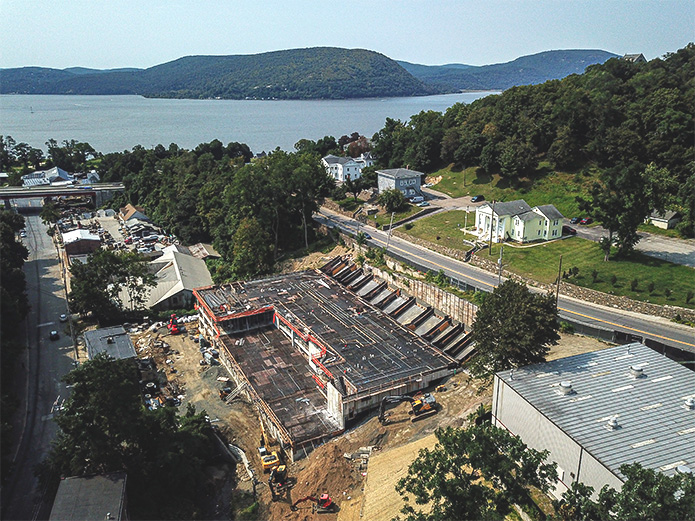SESI's team takes a holistic approach in solving the challenges our development team faces.
SESI takes into consideration all facets of the various engineering disciplines when solving the engineering issues associated with our particular sites.
SESI is hiring for Geotechnical, Environmental, and Site Civil positions. Apply Now!
 Peekskill, NY
Peekskill, NY
Geotechnical, Environmental, and Site Civil Engineering

The Brownfield Cleanup Agreement was signed in mid-2019 for this 1.5-acre property referred to as the Charcoal Tablet Mill Site. In 2022 it received an unrestricted Certificate of Completion. The finished property will be affordable housing residential units, currently surrounded by commercial properties, woods, and a brook on its south border.
It was a combined effort among SESI’s environmental, geotechnical, geo-structural, and site civil departments to make the remediation of this challenging project a success. The SESI team encountered every possible roadblock in completing an unrestricted Tack 1 clean-up for this property.
Between the 1830s and the 1950s, the property uses included a facing mill, charcoal tablet manufacturing, and a plaster mill. After its discontinuation in the ‘50s the buildings were demolished, and the site has sat unused since.
Site history, proximity to the brook, and the topography were a few of the challenges encountered to complete the remediation. The SESI environmental and geo-structural teams worked together to develop the Remedial Action Work Plan (RAWP) to safely remove the contaminated soils at the property, which had elevation changes of more than 60 feet over a span of 100 feet within the northeastern corner of the site. A combination of permanent and temporary support of excavation (SOE) systems were designed to remove all the contaminated soils within the property border, support Main Street on the higher northern side of the site, permanently support the cut slope behind the future building, and support the building loads. In addition, retaining walls and SOE were designed for a nearby building used for the local community activities.
The stormwater pollution prevention measures and inspections were of special importance because of the historically protected brook that runs just at the property border. Archeological surveys were conducted prior to any ground intrusive work to protect any possible historic artifacts from the Site historic uses.
Plans were created with Green Remediation in mind. Defined in NYSDEC DER-31, Green remediation is “the practice of considering all environmental effects of remedy implementation and incorporating options to minimize the environmental footprint of cleanup actions.” The approach is intended to improve the overall sustainability of the remediation by promoting the use of more sustainable practices and technologies. Green Remediation practices and technologies are less disruptive to the environment, generate less waste, increase reuse and recycling, and emit fewer pollutants, including greenhouse gases, to the atmosphere. This plan included:
• Eliminated idling vehicles and equipment when possible; reducing emission of greenhouse gases contributing to climate change
• Operation of particulate detectors to monitor and minimize dust export of contaminants
• Operation of VOC detectors to monitor and minimize VOC exposures
• Use of silt fencing and screening to prevent water export of contaminants
• Excavation of soils in coordination with the property redevelopment efforts; integration of the remedy with the end use, and
• Conducting planned sampling events simultaneously to maximize level of efforts while traveling to/from the Site (economy of scale implementing multiple sampling events)
SESI's team takes a holistic approach in solving the challenges our development team faces.
SESI takes into consideration all facets of the various engineering disciplines when solving the engineering issues associated with our particular sites.